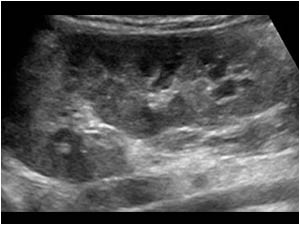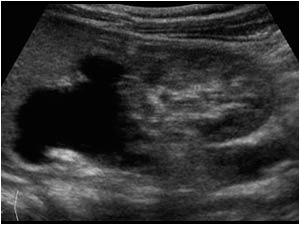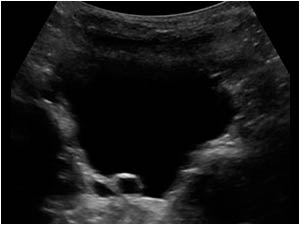Urinary tract infection



The diagnosis is a duplex collecting system on both sides, but with a dilatated upperpole moiety with parenchymal loss on the right side ending in an ureterocele.
The Weigert-Meyer Rule
Complete ureteral duplication with each segment having its own ureteral orifice in the bladder.
Upper Pole Moiety
Inserts medial and inferiorly to the lower pole moiety
Frequently ends in a ureterocele
Lower Pole Moiety
Inserts lateral and superiorly to the ureter draining the upper pole
Reflux can occur. (but in this case no reflux was found)
Usually, upper pole nephroureterectomy is performed for a nonfunctioning moiety (as in this case). For functioning segments, ureteropyelostomy or ureteric reimplantation can be considered.
See also category 9.2.1 pediatric urinary tract with a case of complete ureteral duplication with an upperpole ending in an ureterocele and with reflux in the lowerpole system.